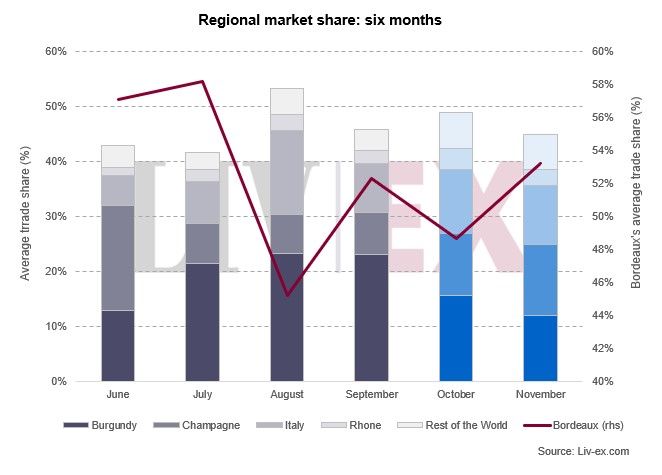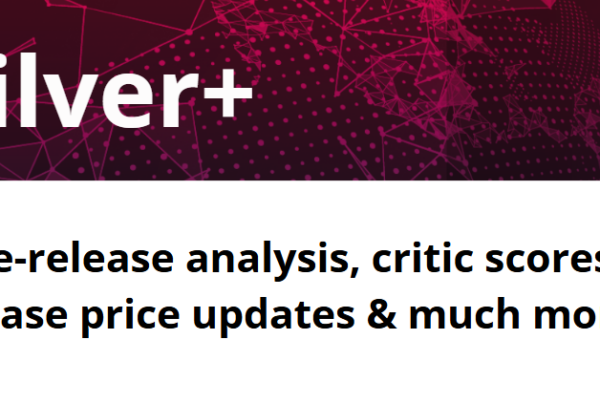Since the World Trade Organisation ruled that the USA can impose an import tax of 25% on most wines from the EU in early October, there has been both confusion and consternation as to the consequences of these tariffs on the wine industry. The most obvious and major concern being that demand for European wines will be hit hard and, as a result, prices might well head south.
In November’s Market Report, we touched upon the issue of price, noting that the Champagne 50 was the only Liv-ex 1000 sub-index to rise in October (up 1.9%) while the Italy 100 experienced only minimal losses (-0.1%) compared to the broader market (-1.2%). Both Champagne and Italy are excluded from the new tariffs.
Since the tariffs were announced on the 2nd of October, we have begun to see a change in regional market share. Champagne and Italy have taken 11% each of the total trade by value, compared to their 2018 annual averages of 8.6% and 8.1% respectively.
Over the same period, Bordeaux has accounted for 54% (60% on average in 2018), while Burgundy for 12%, having smashed records in August when it took almost double the share (23.3%).
US wines also seem to have benefitted from this change of direction. In the past month, the USA has taken 4.1% of the total trade, having previously meandered around 2%. Trade has also diversified; however, it continues to be led by the Napa flagship wines Opus One, Screaming Eagle, Promontory, Stag’s Leap.
To put these figures into visual context, the chart above breaks down the market share of the key fine wine producing regions over the past six months. For a longer term view of the annual market development (2010 – July 2019), click here.
Stay tuned. In the coming weeks, we will be publishing a report on the performance of the fine wine market in 2019, discussing wine prices and activity amongst headwinds. You can already reserve your copy by filling in this form.




